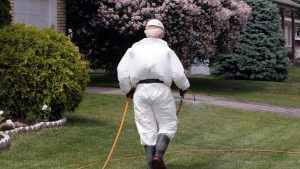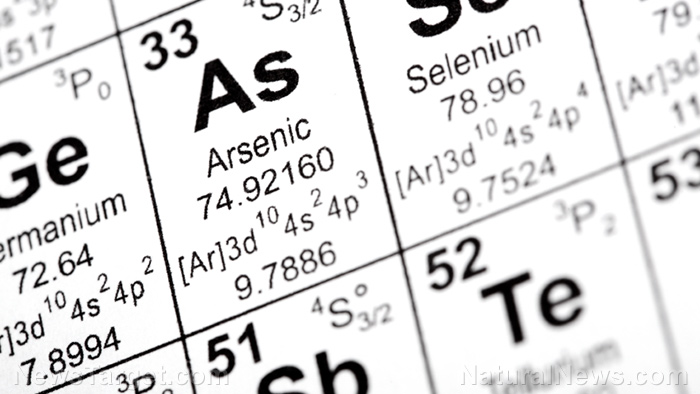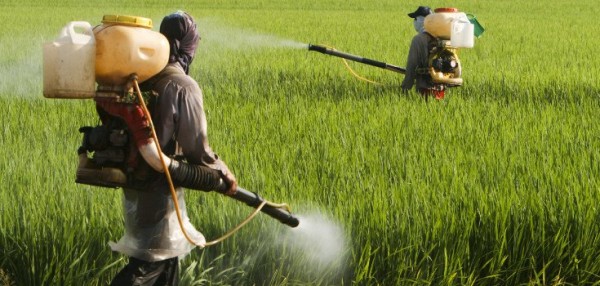Bioresmethrin — toxicity, side effects, diseases and environmental impacts
12/13/2017 / By Janine Acero

Bioresmethrin is a potent contact insecticide effective against a wide range of household insects, plant pests, grain pests and insects found in animal housing. It is applied to houses, industrial premises, public health situations and food storage.
Technical grade bioresmethrin is a yellow to brown viscous liquid which partially solidifies on standing. It is soluble in ethanol, acetone, chloroform, dichloromethane, ethyl acetate, toluene and hexane.
Bioresmethrin is classified as a synthetic pyrethroid. These compounds were developed as pesticides from extracts of dried and powdered flower heads of Chrysanthemum cinerariaefolium. Pyrethroids are many times more toxic to insects than mammals.

List of known side effects
Bioresmethrin can be absorbed into the body by inhalation of its aerosol and by ingestion. It can also affect the eyes and skin upon direct contact. Following substantial ingestion, patients may develop coma, convulsions and severe muscle contractions. The following are some of the adverse side effects of exposure to bioresmethrin:
- Dermal exposure is the most common route of pyrethroid exposure. Irritation of the skin may be characterized by abnormal facial sensation, sensation of prickling, tingling or creeping and numbness, exacerbated by sweating or touching.
- Pyrethroids may also irritate the eyes; lacrimation and transient conjunctivitis may occur.
- Ingestion of pyrethroids may trigger the onset of headaches, drowsiness, dizziness, nausea, vomiting, abdominal pain, diarrhea, excessive salivation and fatigue.
- Inhaling the fumes of pyrethroids may irritate the respiratory tract, with coughing, mild dyspnoea, sneezing and rhinorrhea. Fluid in the lungs and muscle twitching may develop in severe cases. Seizures may occur.
According to the open chemistry database PubChem, bioresmethrin is suspected of causing genetic defects; prolonged or repeated exposure may significantly damage fertility or the unborn child.
Body systems affected by bioresmethrin
Bioresmethrin exposure and poisoning, ranging from mild to fatal, may have adverse effects on the eyes, skin, respiratory tract, gastrointestinal tract and the reproductive system.
Items that can contain bioresmethrin
Bioresmethrin is used to control insect pests such as houseflies, hornets, wasps, mosquitoes, cockroaches and mites. Residues of this chemical may be found in stored commodities, including nuts, peanuts, lentils, dried fruit and dried vegetables.
Some products that contain bioresmethrin as the active ingredient include Pynosect, Pyretherm and Synthrin.
Bioresmethrin are also known by other trade names and identifiers:
- Biobenzyfluroline
- Combat whitefly insecticide
- Isathrine
- Isatrin
- Penick 1390
- Pyrethroid NRDC 107
- Resbuthrin
Additionally, these are some of the manufacturers that supply such products historically or actively:
- Bonide Products
- Scotts Company
- Bayer Environmental
How to avoid bioresmethrin
Avoid products that use bioresmethrin as an active ingredient. Handlers, mixers and applicators of bioresmethrin may be exposed to its fumes in the workplace. The following are some protective measures to avoid any contact with bioresmethrin:
- Use this material only in well ventilated areas. In case of accidental aspiration, leave the area of contamination and go to an open area with fresh air. Seek medical attention immediately.
- Avoid contact with skin or clothing. Wear a protective suit, chemical-resistant gloves and safety footwear or safety gumboots. Remove any contaminated clothing item carefully. Rinse the contaminated part of the skin with soap and water.
- Do not get this material in your eyes. Wear goggles or a face shield. In case of contact, remove contact lenses (if applicable), then rinse with running water for several minutes. Seek medical help at once.
- Do not eat, drink or smoke near this substance. In case of swallowing any amount of bioresmethrin, give plenty of water to drink. Refer for medical attention immediately.
- Refer to label instructions and workplace regulations regarding proper handling of equipment before applying chemicals.
Where to learn more
Summary
Bioresmethrin is a potent contact insecticide effective against a wide range of household insects, plant pests and insects found in animal housing.
Bioresmethrin exposure and poisoning may adversely affect the eyes, skin, respiratory tract, gastrointestinal tract and the reproductive system.
Sources include:
Tagged Under: Bioresmethrin



















